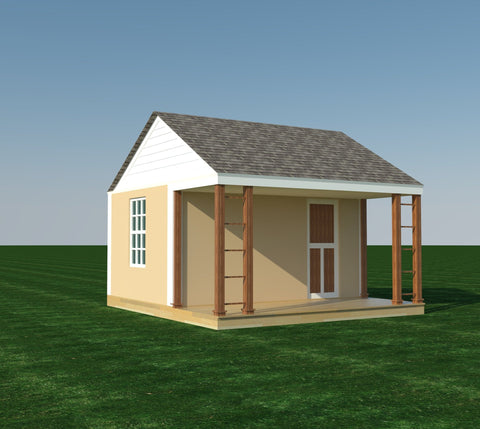Build Your Own 2 Bedroom Adobe House Plans DIY Home Building Project 972 sq/ft
These construction plans are for a 972 sq/ft 2 bedroom Adobe home. The footprint of the home is 36' X 27'.
What are Adobe House Plans?
If you're interested in learning more about the benefits of building an Adobe House, then this article is for you. It covers the Fire-resistance, Passive energy, and durability of adobe construction. Keep reading to learn more. Also, feel free to visit our blog to see our latest projects! You may be surprised to learn that adobe houses are not only beautiful but are also incredibly energy-efficient!
Traditional adobe construction
The basic technique for constructing an adobe house is to create large, flat bricks by hand. The mixture is then shaped into a desired shape, usually rectangular. The wall thickness is typically at least 10 inches. The shape can be asymmetric or circular, but it must be easy to move by hand. The mud bricks are laid on top of a base of straw or wood. The adobe bricks are then left to dry for several weeks.
The basic principles of adobe house construction have not changed much since the ninth century B.C. However, some brick-makers have tried to make their bricks more durable by adding additives to the mix. The mixture used in traditional adobe construction should contain between fifteen and thirty percent clay. Otherwise, the bricks will crack or become crumbly. And if you are trying to build a traditional adobe house, the soil must be moist.
Fire-resistance
LeFors built his adobe ranch-style home in 1990 with the idea of fire-resistance in mind. He used non-combustible materials such as concrete tile roofing and dual-pane, glass block windows. In addition, he built a concrete-clad patio wall that runs the entire length of the house. This also served as a fire-break.
Another benefit of an adobe house is its low energy consumption. The process of making adobe requires much less energy than building conventional brick or concrete. According to Sustainable Sources, adobe requires less than 1/150th of the energy that ordinary bricks require. Therefore, an adobe house requires only about five times less energy than a traditional home.
Passive energy
The thermal mass of an adobe house makes it extremely energy efficient. The material absorbs sunlight, radiates heat throughout the building, and stores residual coolness from the previous night. Because of these properties, an adobe house can be kept comfortable all year round, without the need for expensive AC units. This natural climate control makes it a great choice for homes with limited budgets. With the rising cost of electricity and fuel, more people are looking for ways to cut their energy bills.
The walls of an adobe house act like a capacitor, storing heat well and preventing it from escaping. Even if you do not add insulation or furring, adobe walls can provide thermal power. In fact, pioneers in the desert built their homes using adobe walls. You can learn how to build one yourself with these simple techniques. And while you're at it, be sure to visit the Southwest Solar Adobe School in Glenwood, N.M., and take the time to read their books!
Durability
The Durability of an Adobe House depends on its construction. Most adobe homes are rectangular in shape and rarely have more than two stories. Openings can be built into the walls using wood or concrete lintels, which can add additional strength to the walls. The masonry is made to withstand earthquakes, but there is a risk that the walls will crack and crumble if an earthquake strikes. Fortunately, adobe can be built to withstand most climates.
Traditional adobe houses were built on a solid foundation of stone, sand, straw, or a mix of these three materials. This foundation helps the adobe house spread heat evenly because of its high thermal mass. However, some families added water to the sheets to keep cool. Despite the limited structural strength of adobe bricks, they can last for thirty years if properly built. In fact, this can even be extended if you fire them in a kiln.
All plans are designed by Ben Stone. Ben is a retired Engineer in Canada. Ben also drafts these himself using the latest AutoCAD software to ensure accuracy. He studied Engineering back in the early 1980's. After over 30 years in the Construction industry he developed a passion for building cool items around his farm and cabin. These are great DIY projects. With a little skill anybody can Do It Yourself. Ben is always a email away if you have any questions while building one of his projects. He is adding new plans all the time.










